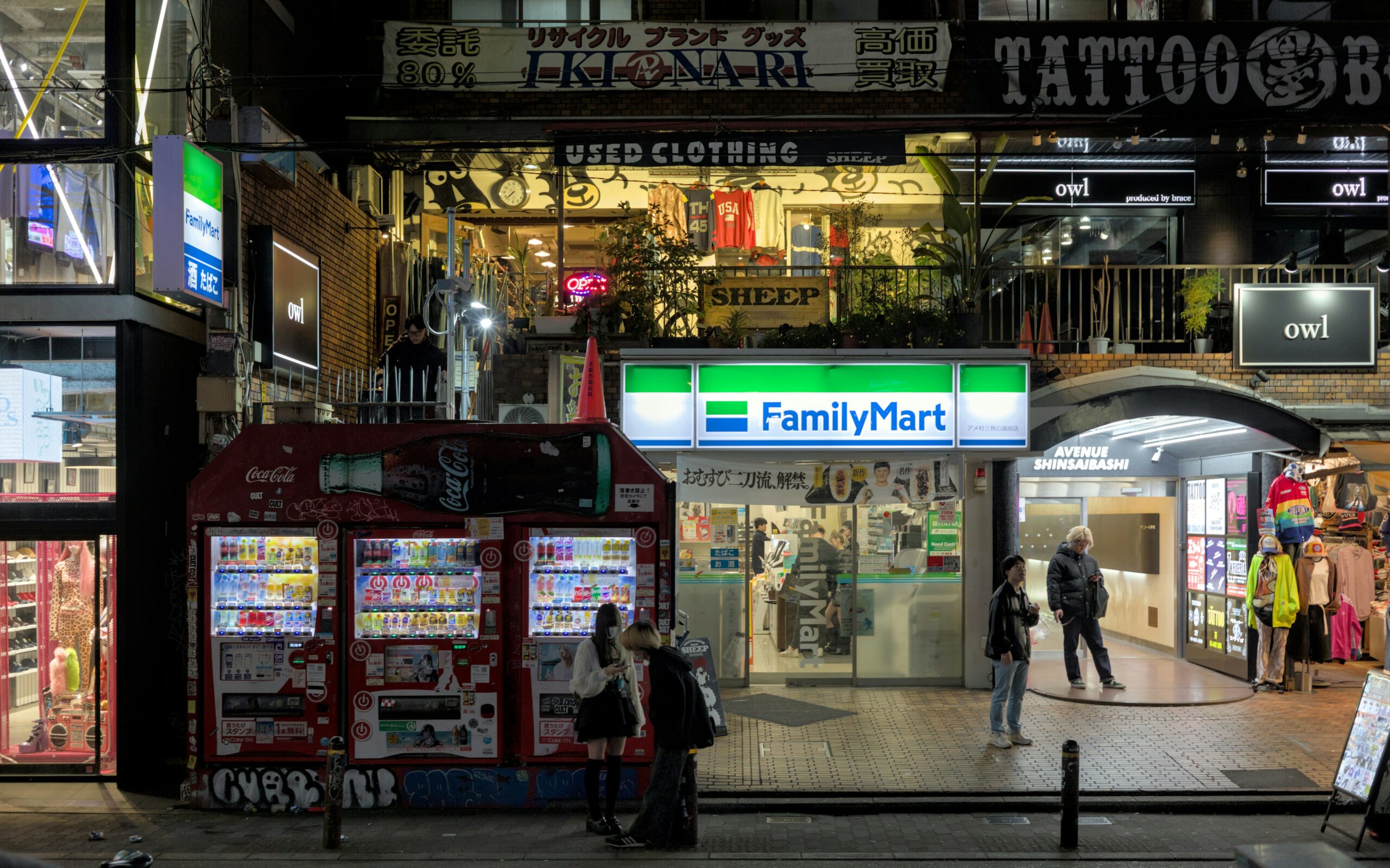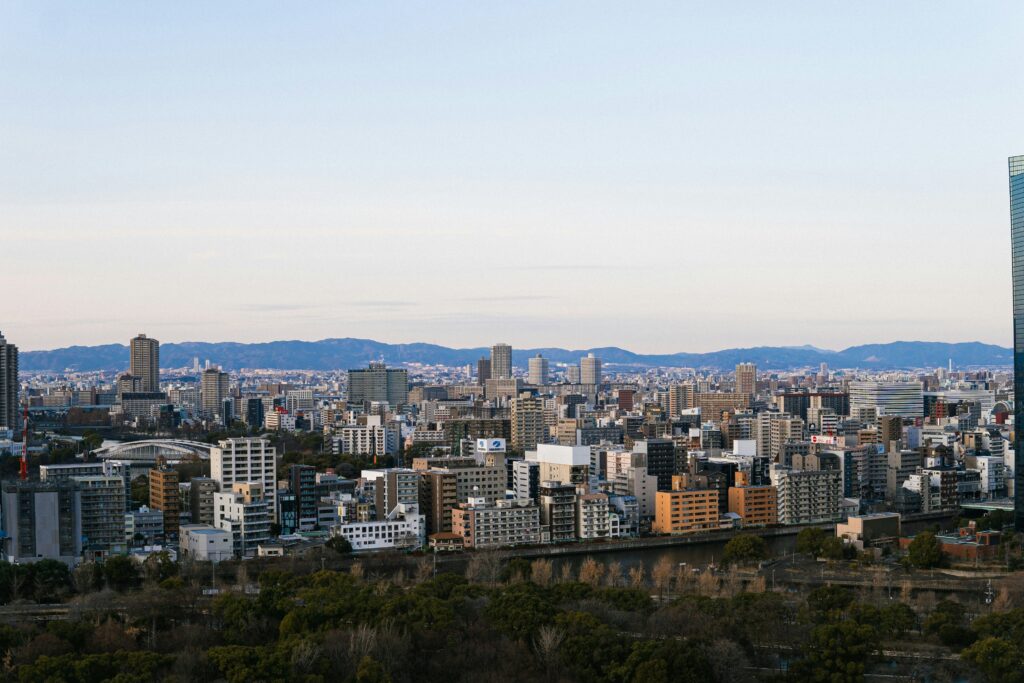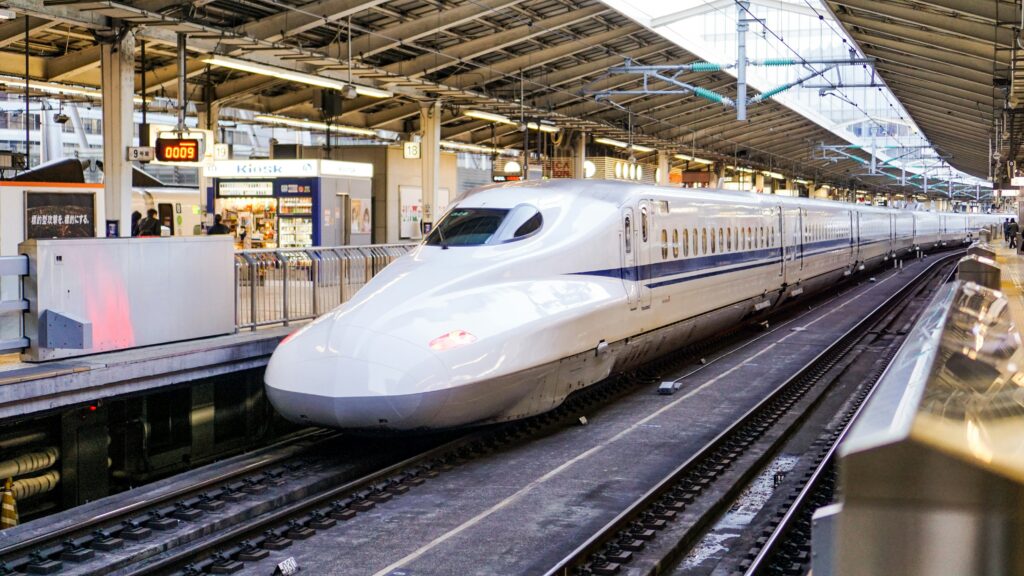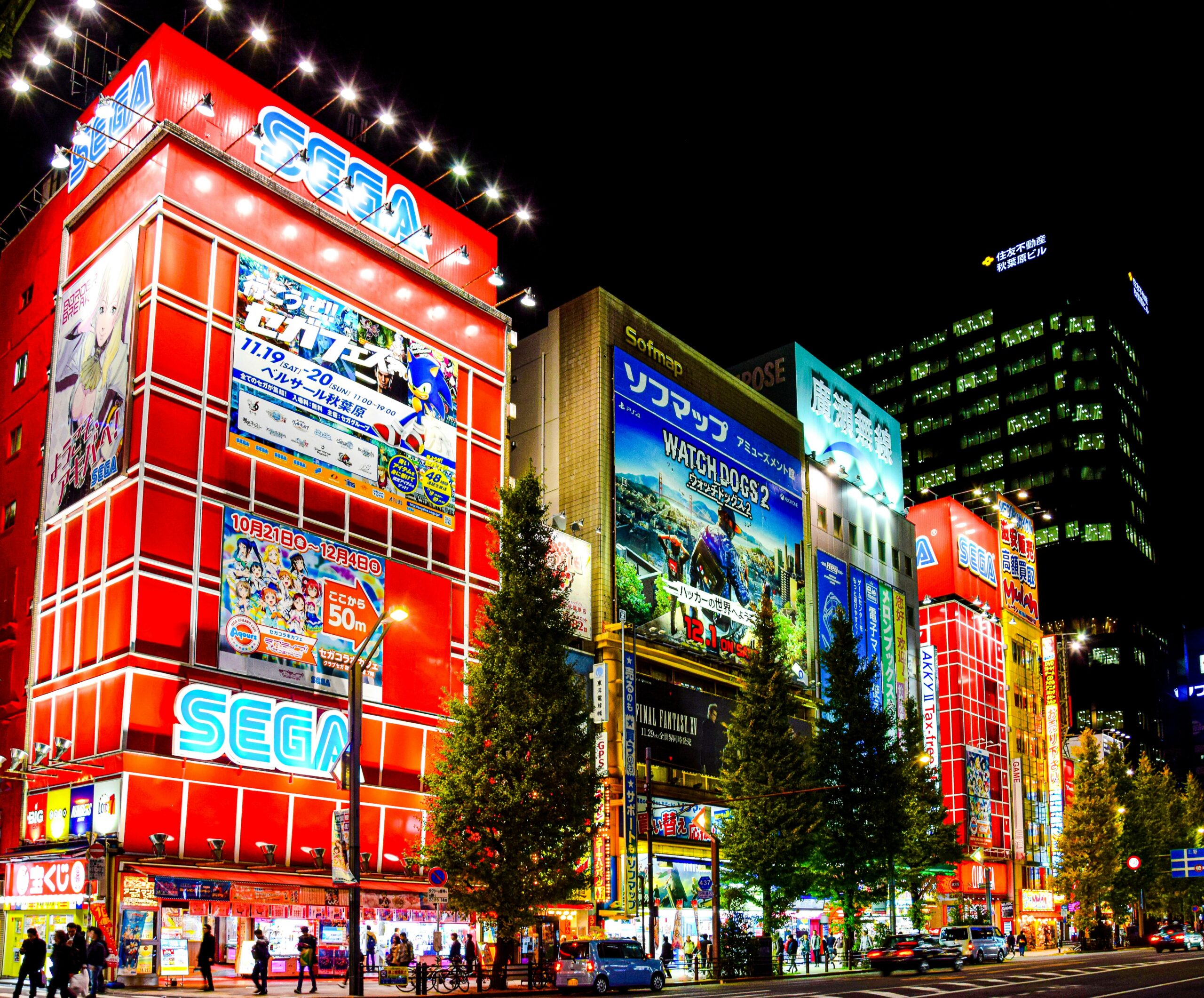Let’s be honest — Japan has a reputation for being expensive. And sure, if you’re splashing out on luxury ryokan every night and eating wagyu with gold flakes, it’ll add up fast. But the truth is? You can enjoy Japan on a budget and still have an unforgettable experience.
Whether you’re a student, a working holiday traveller, or just visiting for a few weeks, the key is simple: spend smart, not less. With the right planning, you can stretch your yen, avoid tourist traps, and still dive into all the magic Japan has to offer — from conveyor belt sushi 🍣 to bullet trains 🚄 and everything in between.
Over the years, I’ve picked up tons of budgeting tips for the cost of living in Japan through research, personal trips, and speaking to friends who’ve lived there long-term. So in this guide, I’ll break down what you can actually expect to spend in Japan — and how to make your budget go further without missing out.
Let’s get into it 👇

💰 Average Daily Costs in Japan
Japan’s daily costs can vary massively depending on your lifestyle, where you’re staying, and whether you’re living long-term or just passing through. So here’s a breakdown to help you set realistic expectations.
🧳 Tourists (Short-Term Stay):
If you’re visiting for a week or two, here’s what you can expect on a budget:
- Accommodation: ¥3,000–¥8,000 per night (hostels, capsule hotels, business hotels)
- Food: ¥1,500–¥3,000 per day (conbini meals, ramen, family restaurants)
- Transport: ¥1,000–¥2,000 per day (metro, buses, JR regional passes)
- Sightseeing: Many temples, parks, and museums are cheap or free. Budget around ¥1,000–¥2,000/day for paid attractions.
💡 Estimated total: ¥6,000–¥15,000 per day (~£30–£80)
🏠 Residents (Students / Working Holiday):
If you’re staying for a few months or more, your daily costs will shift toward monthly budgeting. On average:
- Rent: ¥40,000–¥80,000 per month depending on city and accommodation type
- Utilities + Internet: ¥7,000–¥12,000
- Groceries: ¥20,000–¥30,000 per month
- Transport: ¥5,000–¥15,000 (monthly IC card top-ups or commuter passes)
- Phone Bill: ¥1,500–¥3,000 (cheap SIM plans like LINEMO, Rakuten, etc.)
💡 For long-term stays, ¥100,000–¥150,000 per month is a good ballpark for a modest, comfortable lifestyle outside of central Tokyo.
Whether you’re a tourist or long-term visitor, there are plenty of ways to trim costs without sacrificing experience — and we’ll get into those shortly!

🏨 Accommodation Costs: Where You Sleep Shapes Your Budget
Accommodation will likely be your biggest expense — but thankfully, Japan has tons of affordable options depending on your travel style.
🧳 Short-Term Stays:
- Hostels: Great for solo travellers and backpackers. You can find clean dorms for as low as ¥2,500–¥3,500 per night.
- Capsule Hotels: A fun, space-saving option. Prices range from ¥3,000–¥5,000 depending on the location.
- Business Hotels: Small rooms, but perfect for couples or solo travellers who want privacy. ¥5,000–¥8,000 per night is common.
- Airbnb: Can be affordable if you’re staying a few days in less touristy areas. Be cautious of cleaning fees though!
💡 Tip: Book early during cherry blossom or autumn season — prices skyrocket during these peak times 🌸🍁
🏠 Long-Term Stays:
If you’re staying for a few months, rent will depend on the city and neighbourhood:
- Shared House: (e.g., Oakhouse) Ideal for meeting people and affordability. Prices range from ¥40,000–¥70,000/month.
- Student Dorms: Often arranged through schools or Go! Go! Nihon – great for short-term students.
- Private Apartments: Studio apartments (1K) in Tokyo start at ¥60,000–¥100,000/month. Cheaper in places like Fukuoka or Osaka.
And don’t forget about key money, deposit, agency fees, and possibly guarantor services (which can all add up to 3–5 months’ rent upfront 😬). Agencies like Go! Go! Nihon often work with providers who make this process simpler for foreigners — something to consider if you’re nervous about apartment hunting.

🚇 Transportation: Trains, IC Cards, and JR Passes
Japan’s transport system is insanely efficient, but it can eat up your budget if you’re not careful. Thankfully, there are ways to be smart about it.
🚶♂️ Local Travel (Daily Use):
- Use IC cards like Suica or Pasmo in Tokyo, or Icoca in Kansai. You just top them up and tap in/out.
- Metro rides in Tokyo range from ¥170–¥320 depending on distance.
- If you’re commuting regularly, consider getting a commuter pass — it saves a lot over time.
- Bikes are super common in flat cities like Kyoto, and many areas have bike share programs 🚲
🚄 Travel Between Cities:
- Shinkansen (bullet train) is fast, but expensive. A one-way trip from Tokyo to Osaka costs around ¥14,000.
- The Japan Rail Pass is only for tourists, but if you’re doing multiple long-distance trips, it can save you a lot.
- Budget options: Look into highway buses (like Willer Express), which are slower but cost as little as ¥2,000–¥5,000 per trip. Perfect if you’re not in a rush.
💡 Tip: If you’re living in Japan long-term, you’ll likely get familiar with local trains and avoid expensive long-distance travel unless it’s for a holiday.

🍜 Food Costs: From Convenience Store Feasts to Izakaya Nights
Whether you’re a budget traveller or a food-lover ready to splurge, Japan makes eating out both fun and affordable — if you know where to go.
🥪 Budget-Friendly Eats:
- Convenience Stores (コンビニ): Not your average 7-Eleven! Grab a bento box, onigiri, or sandwich for ¥300–¥600. Perfect for quick breakfasts and light lunches.
- Gyudon Chains (like Sukiya or Yoshinoya): Bowls of beef and rice for under ¥500 — filling, fast, and tasty.
- Supermarkets: Hit them after 7PM and you’ll find loads of discounted meals and sushi trays. Score a full dinner for under ¥600.
🍱 Mid-Range Meals:
- Set Meals (定食 / Teishoku): A tray with rice, miso soup, pickles, and your main dish for ¥800–¥1,200. Healthy and filling!
- Izakaya (居酒屋): Share small plates with friends. You’ll spend around ¥2,000–¥3,500 for a casual night out including drinks 🍻
🍣 Special Treats:
- Craving sushi at a nice restaurant? Expect to pay ¥2,000–¥10,000+, depending on the level of luxury.
- A bowl of authentic ramen from a famous spot? Around ¥900–¥1,200 — and worth every slurp 😋
💡 Tip: Tap into Japan’s amazing lunch sets (ランチセット) — many upscale restaurants offer cheaper deals during lunch hours!

🎮🛍️ Sightseeing, Shopping & Entertainment
Even if you’re on a budget, you don’t have to miss out on the amazing experiences Japan has to offer.
🏯 Sightseeing & Culture:
- Many shrines and temples are free! Some, like Kyoto’s Kinkaku-ji or Nara’s Todai-ji, charge small entrance fees (around ¥300–¥600).
- Museums often cost between ¥500–¥1,200, and some offer student discounts.
- Theme Parks like Disneyland or USJ are pricier (around ¥8,000+ per ticket), so plan those as special treats.
🛍️ Shopping & Souvenirs:
- 100 yen shops (like Daiso) are goldmines for gifts, snacks, and quirky souvenirs.
- Don Quijote has everything you never knew you needed — from cosmetics to cosplay.
- Want to do some fashion shopping? Keep an eye out for seasonal sales or hit up second-hand shops like Book Off and Mode Off.
🕹️ Entertainment:
- Karaoke: Sing your heart out for ¥500–¥1,500/hour, especially if you go during the day.
- Game Centers: Great fun for a few hundred yen. Try your luck at a claw machine or battle it out in a rhythm game.
- Anime & Manga Cafes or Maid Cafes: Fun for a one-time visit (expect to pay ¥1,500–¥3,000).
💡 Tip: Check for combo tickets or discount passes in touristy cities — you can save a lot by bundling attractions.

🧮📱 Budgeting Tips, Apps & Tools
So, how do you actually stay on top of your budget in Japan without constantly checking your bank balance and panicking every time you swipe your Suica?
📲 Apps to Help You Budget Like a Pro:
- Moneytree: A powerful app that connects to your Japanese bank accounts and credit cards (if you have them), letting you track everything in one place.
- Zaim: One of the most popular Japanese budgeting apps. It’s in Japanese, but great if you want to practice language immersion while watching your yen disappear 💸.
- Google Sheets / Excel: Sometimes old school is best. Set up your own budget spreadsheet with expenses for rent, food, transport, entertainment, etc.
💡 Practical Tips:
- Use cash for your daily spending — it’s easier to feel the weight of what you’re spending and helps prevent impulse buys.
- Withdraw from ATMs at 7-Eleven or Japan Post, as many foreign cards are accepted there.
- Keep receipts and check them weekly to see where you can cut back (like all those tempting convenience store snacks 😅).
- Set a weekly limit for spending — and give yourself a small reward if you come in under budget!
🔁 Track > Adjust > Repeat — Japan isn’t the cheapest place in the world, but with a bit of planning, it’s 100% manageable even on a tight budget.

✅ Final Thoughts
Whether you’re planning a two-week trip or prepping for a full year in Japan, understanding how much things cost is a key part of making your adventure smooth and stress-free.
Sure, Japan has a reputation for being expensive — and yes, it can be — but with the right tools, apps, and a little bit of discipline, you’ll find that living and traveling here can actually be pretty budget-friendly. You just need to know where your money is going and be smart about where to save and where to splurge.
So go ahead — grab that bento, plan that Kyoto trip, and keep living your best (well-budgeted) life in Japan 🗾💸

🔗 Related Blogs:
